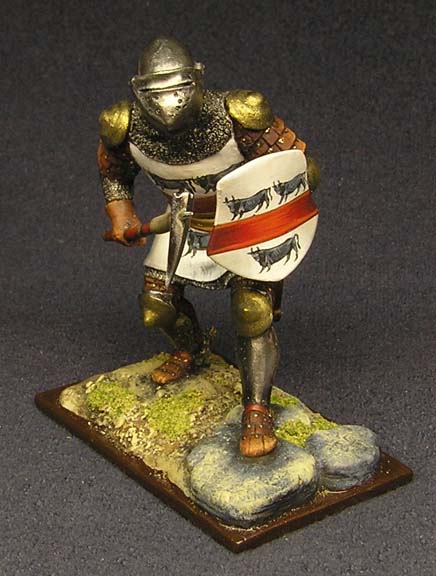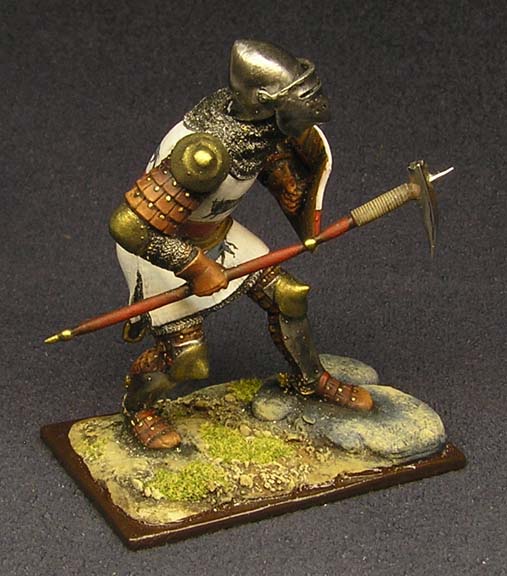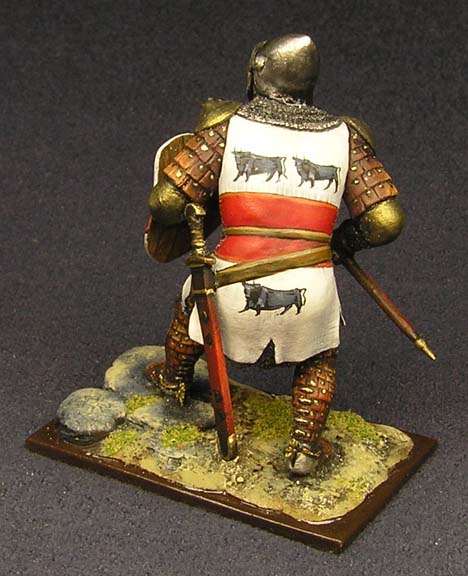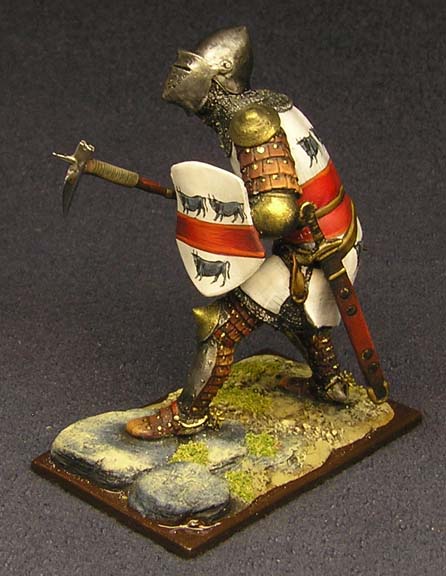Sir Hugh de Calveley


By the time he was old enough to serve as a soldier, Calveley and his companion Robert Knollys (who may have been his half-brother) joined Thomas Dogworth's group of English soldiers departing for France to fight in what became known as "The Wars of Breton Succession." England was backing the claim of Jean de Montfort to be the Duke of Brittany and was sending soldiers to France to fight for the Claimant.
France supported Charles de Blois as the Duke of Brittany, and the dispute would rage from 1342 to 1365, culminating at the Battle of Auray. At Auray, Charles de Blois lost his life, which removed the obstacle from de Montfort's ascendancy to the Dukedom.
By the time of Calveley and Knollys participation in the Battle of Auray, they both held the title of Knight, having earned their spurs and knighthood subsequent to the Battle of Crecy in 1346. Both were commanders of groups of English mercenary soldiers called 'Free Companies'. These bands of mercenary freebooters plundered the countryside of France for many years profiting from looting and collecting ransom from captured prisoners capable of purchasing their freedom. This 'Free Company' activity made Sir Hugh a wealthy man.
In 1367 Calvely and many of the Free Companies were recruited by Edward the Black Prince, heir to the crown of England, in an ill-advised support of Pedro the Cruel of Castile and his restoration to the throne of Castile. Pedro's popular half-brother Henry of Trastamara had usurped the kingdom from Pedro, and now Pedro hired the English to restore his throne to him.
The Black Prince once more demonstrated his skills as a general and at the Battle of Najera defeated Henry's army. Pedro now back in power reneged on his promise to compensate the English for the expensive campaign launched on his behalf, causing long-term financial problems for England.
His years as a mercenary behind him, Calveley's priorities underwent change. Increasingly, Sir Hugh became focused on service to his mother country, England. He fought a number of actions on behalf of the crown in the 1370s and in 1375 was appointed Governor of Calais. In 1376 he added Governor for Life of the Channel Islands to his list of honors, and in 1379 he was made Admiral of the West. The following year on return from a raid by his 20 ships on Brittany by a force commanded by Sir John Arundel, the Marshal of England, there was a great storm which wrecked the ships and killed 1000 men. Sir Hugh was one of only eight surviving the disaster.
In 1383, now in his late 60s, he was assigned Military Commander of the ill-fated "Norwich Crusade" which was a continuation of the conflict between the Popes in Avignon and Rome.
It is clear from the many important duties assigned to Sir Hugh in his later years that his experience, judgment and wisdom were highly regarded by the Crown of England. In addition to the many assignments from the king, Sir Hugh served in Parliament, representing Rutland, and was appointed a Justice of the Peace.
Sir Hugh Calveley died in 1394 at age 79. His tomb effigy lies in St. Boniface Church in Bunbury, Cheshire. The beautifully crafted alabaster monument of Sir Hugh in place in St. Boniface outfits him in full armor. The monument fashioned in the first decade of the 15th century is thought to have been commissioned by Sir Robert Knollys, who died in 1407.



 Up
Up